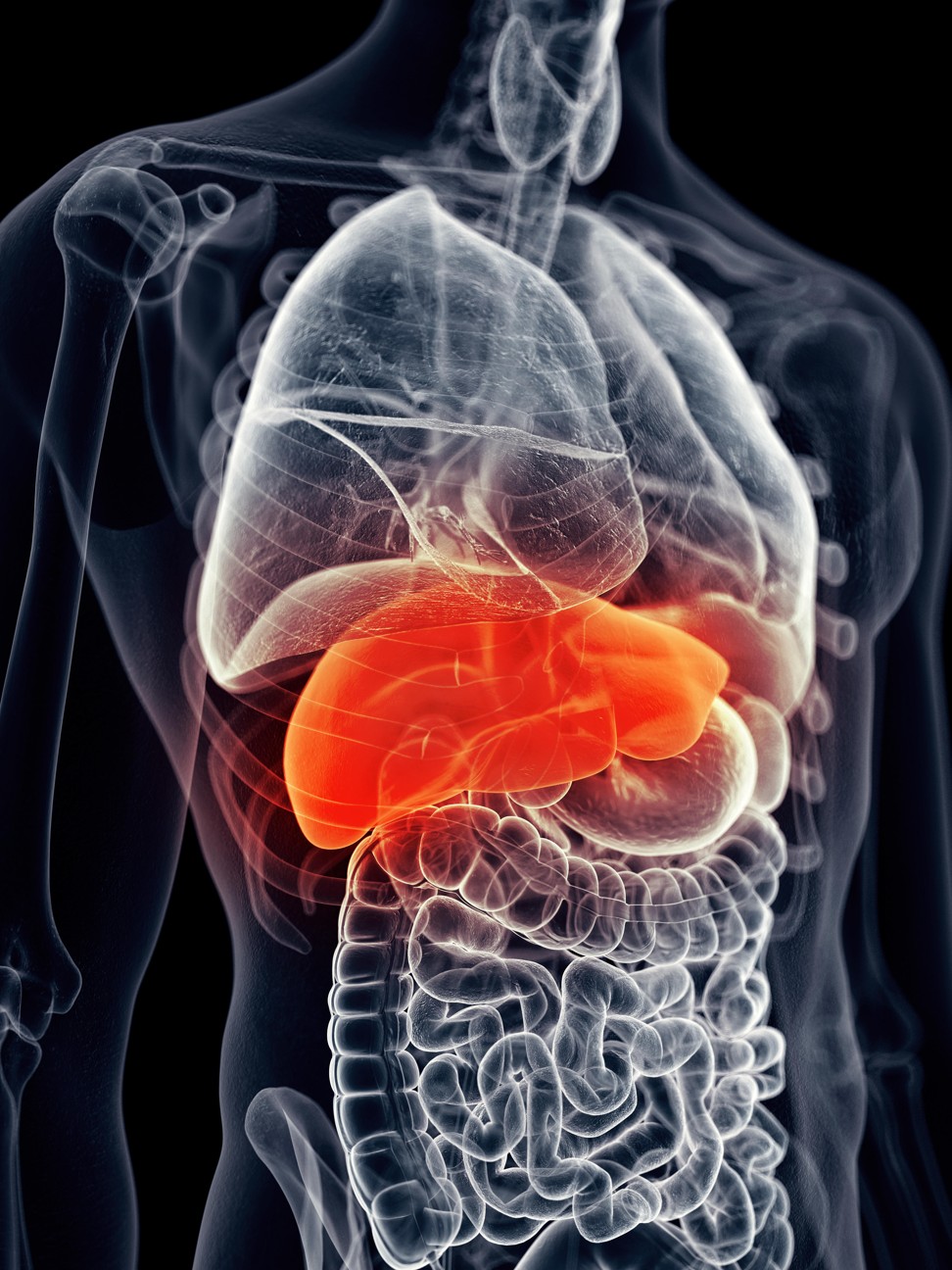
Why the liver is a multi-purpose marvel and how we can help keep it healthy
- Half a liver can regrow to its normal full size in just two weeks
- 60 to 70 liver transplants are done each year in Hong Kong, mainly due to cancer or hepatitis-induced liver failure
We often hear talk of the liver in relation to alcohol – “My liver won’t thank me in the morning!” we might say while out drinking. But it may be time to pay attention to this organ, and appreciate it for the marvel that it is. Responsible for carrying out over 500 functions, the liver is both the largest gland and the largest solid organ in the body. A “dry” January probably would have been a good idea.
The liver is found in the upper right quadrant of the abdomen – the area underneath the ribs on the right side of your body. It is split into two main lobes which are then divided into eight segments, each with about 1,000 smaller lobules. Sixty per cent of the liver is made of cells called hepatocytes, of which there are more than 200,000 in every milligram of liver tissue. These cells survive on average for 150 days.
Chinese doctor who’s living proof of cancer immunotherapy’s potential
Approximately 13 per cent of the body’s total amount of blood – about a pint – is found in the liver. It filters 1.5 litres of blood every minute. Every day, this organ also produces from 800 to 1,000 millilitres of bile, which helps the body break down and absorb fats.
This multi-purpose organ weighs between 1.2 and 1.5 kilograms.

Dr Paul Ng, a Hong Kong-based specialist in gastroenterology and hepatology (concerning diseases that affect the liver, gallbladder, biliary tree and pancreas) summarises the liver’s four main jobs.
The first is the expulsion of unwanted waste, such as alcohol and food additives, by excreting them as bile which flows into the gut. The second is synthesis, the manufacture of important substances such as protein, as well as production of amino acids and glucose from the food we eat.
The third is storage of calories in the liver as fat and glycogen, which are then converted back to glucose when the body demands energy. The fourth is boosting immunity. Part of the reticulo-endothelial system, the liver removes any pathogens that are in the blood and returns clean blood to the heart.
Dr Ng says the liver is susceptible to several diseases and health concerns, chief among them non-alcoholic fatty liver disease (NAFLD), alcoholic liver disease, chronic viral hepatitis (B and C), acute vital hepatitis (A and E), and drug-induced injury (such as can be caused by Panadol and Chinese medicine misuse).

NAFLD is the umbrella term for several conditions induced by a build-up of fat in the liver. It tends to be seen in those who are overweight or obese and, while NAFLD in its early stages does not often cause much harm, it can lead to serious health concerns such as liver damage. NAFLD is fairly common in many countries, affecting one in four of Hong Kong’s population and one in three of those in the United Kingdom.
Dr Ng also highlights that one in 10 people in Hong Kong suffer from hepatitis B and that “Chinese medicine-induced liver injury is probably more common in Hong Kong than in other developed places”.
Liver failure is a condition that requires medical attention immediately, and occurs when large parts of the liver are irrevocably damaged.
Fatty liver disease, the ticking time bomb you’ve never heard of
Dr Ng explains that there are usually no symptoms of liver disease, but that there are some warning signs: sleep disturbance – insomnia at night and sleepiness in the daytime; shaky hands; red palms; yellow skin and “Coca-Cola [coloured] urine”; swelling of the belly and feet; mood changes, especially agitation; slow mental ability such as difficulties with calculation – driving test failure is higher in people with very early liver encephalopathy; poor appetite, and; change in stool texture to “loose and floaty”.
The lack of clear symptoms makes it difficult to diagnose liver problems, and standard liver tests may not reveal even serious conditions.
Liver transplants are the second most common transplant surgery, after kidney transplants. The surgery entails removing the unhealthy liver and replacing it with a healthy one, or a portion of a healthy one. Donors may be alive or dead.
While liver transplants are now generally successful, the first ones ever performed – in the mid-1960s by Dr Thomas Starzl and his colleagues at the University of Pittsburgh in the US state of Pennsylvania – were disastrous. Patients did not live for more than a few weeks after the surgery due to ineffective anti-rejection medications. Nonetheless, in 1967 Dr Starzl performed the first successful liver transplant.
Donors need only donate part of their liver for a transplant to be a success owing to the liver’s amazing ability to completely regenerate from as little as 25 per cent of the original liver tissue. Half a liver can regrow to its normal full size in just two weeks.
The pancreas: how it works, why it matters and how to keep it healthy
The liver is our bodies’ ultimate multitasker – the busy bee making itself useful in almost every bodily function one way or another. Having its finger in pretty much all the pies – from controlling blood sugar levels and filtering out toxins, to manufacturing sex hormones and fighting infections – the liver never gives itself a break. Consequently, we must ensure that we look after it so it can continue the amazing work of keeping us healthy.
Dr Ng suggests six key ways to foster liver health:
1. Avoid overeating and weight gain.
2. Don’t drink too much alcohol. “In excessive amounts, almost all people will get liver injury to different degrees,” he says, though drinking in moderation is probably safe for those who don’t suffer an underlying liver condition, such as hepatitis B or NAFLD.
3. Have all recommended hepatitis vaccines.
4. Do not take Chinese or Western medicines without being sure of the correct dosages, indications, contraindications and side effects.
5. Avoid eating shellfish and pork products unless you are certain they have been well cooked.
6. If infected with chronic hepatitis B or C, seek treatment immediately.

